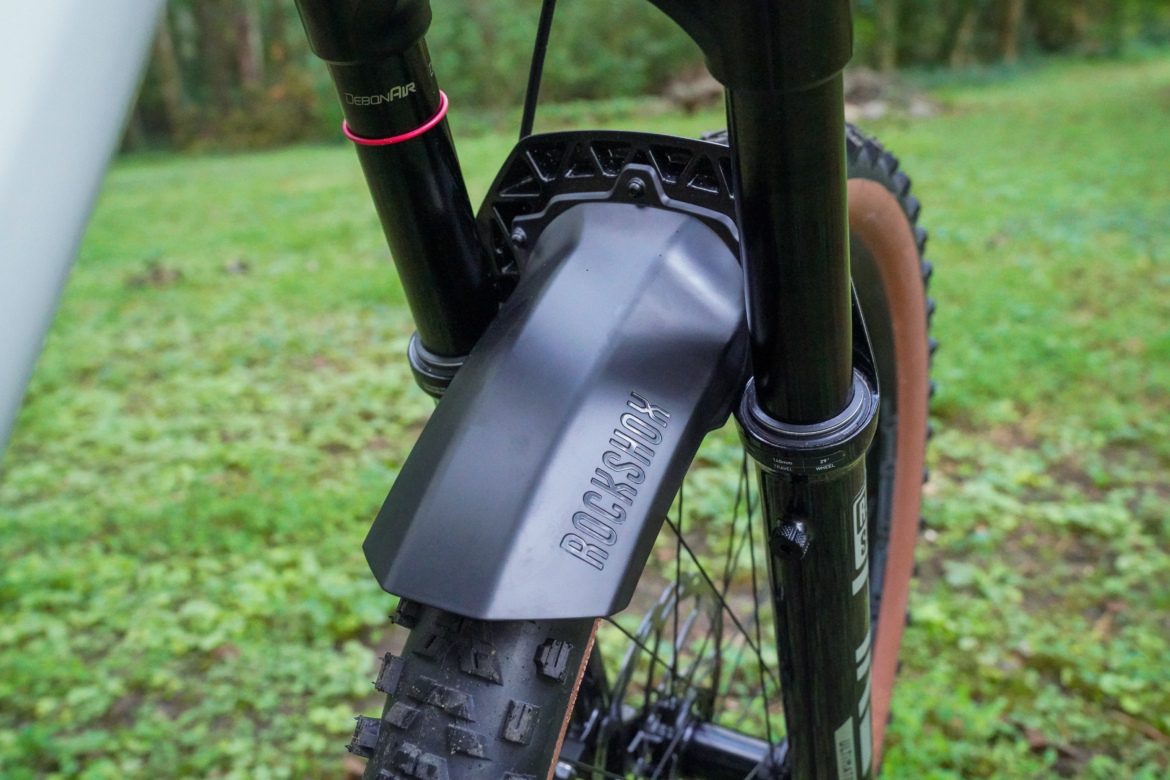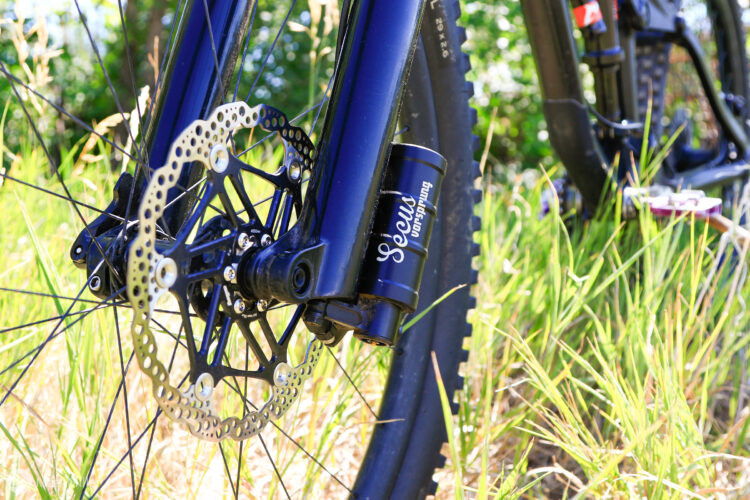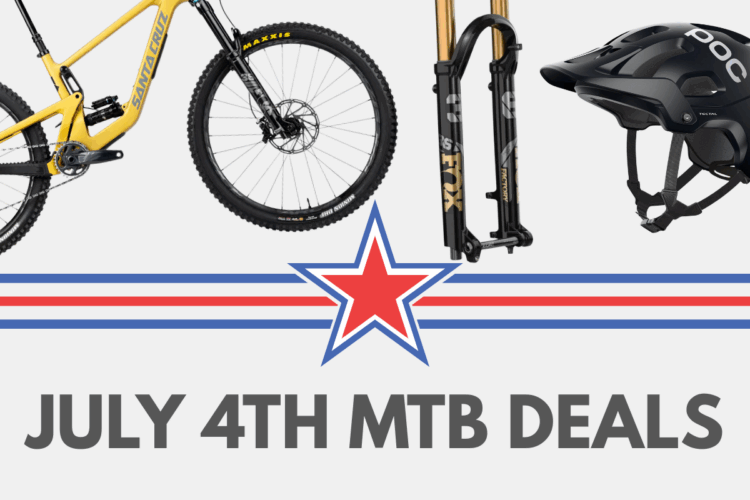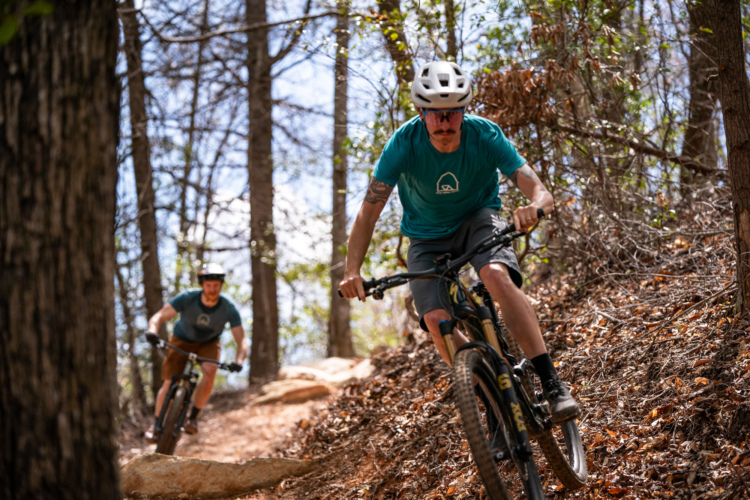
The RockShox Pike Ultimate is a fork that needs no introduction, but I’ll give it one anyway. The Pike Ultimate sits at the top of the RockShox line of trail forks designed for the highest levels of performance and reliability in a lightweight and serviceable package.
I’ve personally tested more than 75 different mountain bikes since 2015, and among my favorite test bikes, like the Pyga Hyrax, Evil the Following, and Canyon Spectral, the RockShox Pike trail fork has been a common denominator. When it comes to bike reviews, there are obviously many variables at play, so I decided to test the Pike on my own bike to eliminate as many variables as possible and evaluate the fork on its merits alone. Now I can say that the RockShox Pike Ultimate is my favorite mountain bike fork; here’s why.
RockShox Pike Ultimate key specs
- 120, 130, or 140mm of travel
- Version tested: RockShox Pike Ultimate 29 with 140mm of travel
- Price: $1,054 as tested
- Buy from Worldwide Cyclery

The RockShox Pike Ultimate features 35mm diameter aluminum stanchions and is available with 120, 130, or 140mm of suspension travel. There are versions for 27.5″ or 29″ wheels, and both utilize 15x110mm Boost axle spacing. The 29er version I tested is only available with a 44mm offset, while a 27.5″ Pike can be had with either a 37mm or 44mm offset. SRAM says the Pike can fit tires up to a whopping 81mm wide, which is nearly 3.2in.
Reviewer profile height: 190cm (6’3″) weight: 75kg (165lb) testing zone: Southeast, USA
The Pike Ultimate is the most adjustable RockShox trail fork and utilizes the brand’s latest and greatest damper, the Charger 3, which features independent controls for high and low speed compression and low speed rebound. On the spring side, RockShox says the Debonair+ is their “best air spring to date” with a “higher overall ride height” to help with steep trails.


New for this generation Pike Ultimate, ButterCups promise to decrease trail chatter by 20%.
One feature that’s been hobbled on the latest RockShox Pike is the pressure relief function, likely as a result of this Fox lawsuit. My Pike Ultimate test fork came with bolts instead of the easy-to-use bleed valves previously seen on RockShox forks.

Not only that, I couldn’t find any mention of the pressure relief feature anywhere on the RockShox website or in the fork manual. Fortunately unscrewing the bolts still seems to do the job of equalizing pressure after a change in temperature or altitude. A few online retailers like Lost Co. list replacement valves you can swap for the bolts, but the shops I checked are currently “out of stock.”
RockShox makes a big deal about their use of SKF seals and Maxima Plush fluids on the Pike Ultimate, and both certainly represent premium selections. However neither is exclusive to the Pike or even RockShox.



Turning toward the outside of the fork, the Pike Ultimate fits disc brake rotors from 180-220mm. An included short fender attaches to the crown arch using three bolts.
After cutting a bit off the top of the steerer tube, my 29er fork with 140mm of travel weighs 1885g, including the star nut, fender, and crown race. That’s 2g lighter than the official published weight of 1887g.

On the trail with the RockShox Pike Ultimate
I installed the Pike Ultimate on my Canyon Neuron trail bike way back in September and set the sag a little north of 25%. The RockShox Trailhead app (actually, it’s a website, so you don’t need to download anything) recommended 68psi and -11 clicks on rebound based on my weight. The pressure was pretty much dead equal to what I found by setting the sag. After a bit of ride testing, I subtracted another couple of clicks of rebound to settle at -13.
Riders can add volume-reducing tokens to help tune the Pike Ultimate, though I didn’t find this necessary.
Over more than seven months of riding, I tested the Pike Ultimate on everything from groomed Bentonville flow trails to local technical jank. As a trail fork, the Pike needs to be able to cover a lot of ground, so it was important for me to see how it performed in a variety of situations.
Share your RockShox Pike Ultimate review
Big hits are seemingly the ultimate test of a mountain bike fork, though I’ll argue later that the other stuff is just as important, if not more so. But sticking with rough riding for the moment, I found the Pike Ultimate, with its large volume air spring, has no problem ramping up and absorbing hard landings and no-lift front wheel smacks. If I ever bottomed out the fork, I didn’t feel it.
With the rebound dialed, the RockShox Pike Ultimate confidently tracks through high speed rock gardens and holds its line as well as pretty much any fork I’ve tested. I expected to be able to feel the effects of the Buttercups in this type of riding, but if I’m honest, I didn’t notice anything special. I suppose if I was able to compare a Pike without Buttercups, I might be able to tell a difference. But that’s TBD.
According to RockShox, Buttercups are designed to help filter out high frequency vibrations, which is a pretty specific type of “trail chatter.” In my experience, high frequency vibrations are more often associated with bike park braking bumps and washboard roads than say chunky rocks and roots encountered at irregular intervals. Even when mountain bikers do encounter braking bumps or washboard stretches, it’s rarely for long periods of time where high frequency chatter starts to get annoying. So, while Buttercups are an interesting solution, I didn’t find the tech to be all that noticeable or impactful for everyday trail riding, and if there was an improvement in traction or control in certain sections, I couldn’t feel it. Were my arms less fatigued at the end of longer rides? Possibly, but again it’s hard to compare directly.
Where the RockShox Pike Ultimate really seals the deal for me is on rolling trails that involve frequent pedaling and climbing. The small bump sensitivity is divine, delivering the smoothest ride I’ve found yet. I suppose the use of Maxima fluids and those SKF seals does a lot to reduce stiction, allowing the fork to feel instantly responsive to bumps in the trail. The smooth nature of the Pike Ultimate is all the more surprising given the distinct lack of a high-sheen Kashima coating. And yet, I can confidently report that these black stanchions feel just as good or better than many of the gold-tinted ones I’ve tested.
When it comes to support, the Pike Ultimate is tops. Sitting high in its travel the fork is well supported in the climbs and through hard pedaling efforts. As the fork progresses through its travel the support remains consistent without diving, and ramps smoothly as it approaches full travel. With a weight that’s lower than many competing trail forks, the Pike Ultimate gives the front end of the bike a lively feel that lends itself to manuals and a poppy riding persona.
The Pike doesn’t have a full lockout option, and in my experience, it doesn’t need one. (This isn’t an XC race fork, after all.) I found the middle high speed compression settings worked well for most of my rides. The low speed compression dial offers more nuanced settings, and I generally preferred to be on the higher end with plenty of support.
Overall, the Pike Ultimate is a stiff fork, though I got hints of flex while cornering when running a 203mm rotor. Leaning the bike to either side caused a corner of the brake pad to catch the rotor, a sure sign of minor fork flex. With 180mm rotors, the noise disappeared completely. I never really felt the fork flexing, but clearly, the legs do flex when sideloaded.
RockShox offers several versions of the Pike to fit various price points. Based on the feature set I think I’d be just as happy with the Pike Select+ as I have been with the Ultimate. I’ve also spent some time on the Pike Select and base Pike over the years, and both are good forks, though they obviously don’t offer the same level of performance as the Select+ or Ultimate.
For riders like me who are looking for a 140mm fork, the RockShox Lyrik is also available in a 140mm travel version and offers a pretty similar spec and features list. In my experience, the Lyrik is an excellent fork too. However, the lighter weight associated with the Pike is ultimately what sold me on it for my Canyon Neuron build.

RockShox Pike Ultimate service notes
Overdue for a 50-hour service by about 50 hours, I pulled up the Pike Ultimate service manual to get started. To their credit, RockShox provides excellent documentation across 148 pages (!) of text and photos. With another 100 hours to go until it needed a full 200-hour service, I decided to knock out two 50-hour services at once (ha).
While the fluid inside the fork appeared to be clear of contaminants, the foam rings tell a different story. Clearly some dust and dirt made its way inside the fork seals over months of hard riding.
The 50-hour service mainly involves replacing the fork oil and the foam rings while checking to ensure there aren’t any other problems. Everything looked tip-top on my fork, and changing the clear-looking oil and replacing the foam rings didn’t seem like it would make a difference. But it did.
The Pike felt like a new fork on my first ride after the service. Fork performance, like a lot of other things, slowly degrades over time, which means it’s not noticeable from one ride to the next.
As an amateur home mechanic, I found the 50-hour service to be a medium difficulty task. Overall, the Pike Ultimate design makes at-home service pretty approachable, though likely not for the 200-hour service, which involves many additional skills and supplies. I’ll probably leave that one to the pros.
Pros and cons of RockShox Pike Ultimate
Pros
- Excellent support
- Highly adjustable for dialing in ride feel and performance
- Mid lightweight design lends itself to downcountry/trail bike spec
- Capable of absorbing bigger hits
Cons
- Crippled pressure relief valve functionality
- Minor flex that’s noticeable at tighter rotor clearances
Bottom line
Based on my testing I can say the RockShox Pike Ultimate is the ultimate trail fork. It’s tough enough for riding hard but also a strong and sensitive climber without weighing down the front end of the bike. In short, the Pike makes every trail bike I’ve tested ride like a better bike.





















1 Comments
May 2, 2024